December 28, 2023
Merry Christmas!
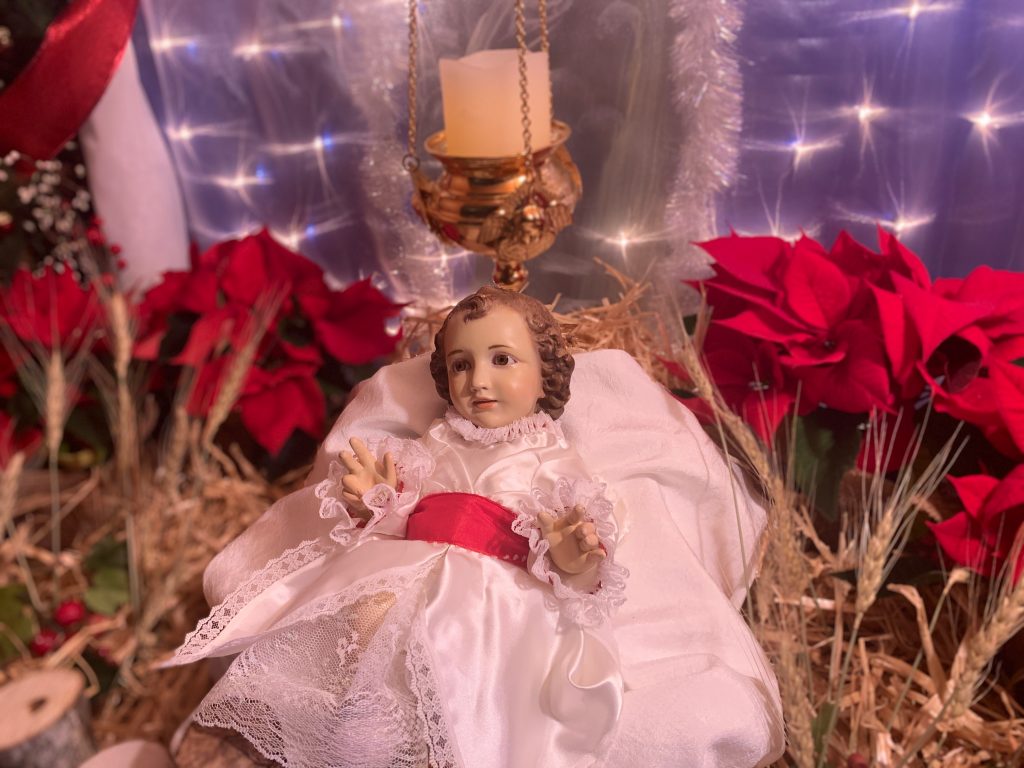
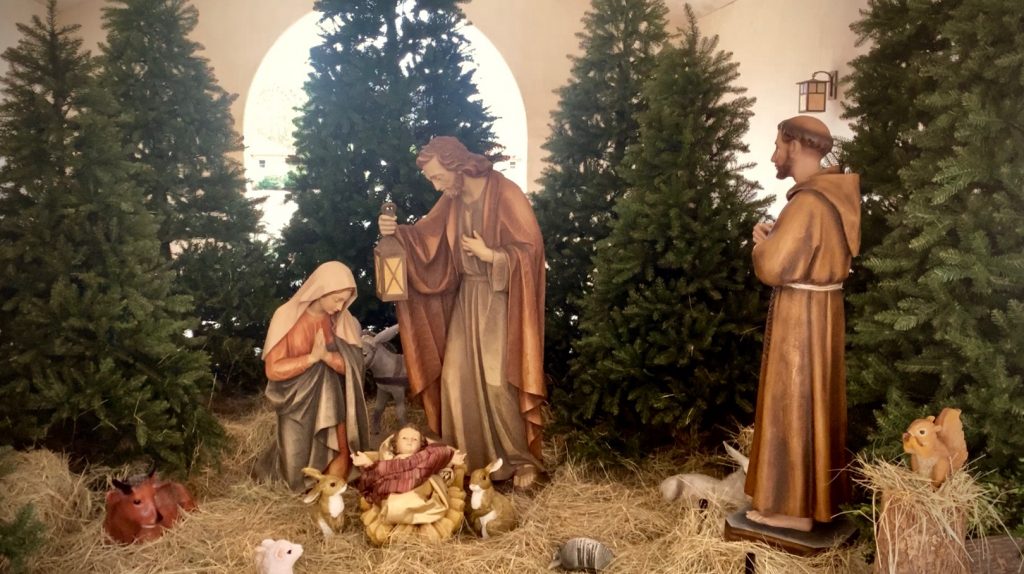
May you find your peace and joy with the Holy Family during these most special days. You are in our joyful prayers!


December 28, 2023


May you find your peace and joy with the Holy Family during these most special days. You are in our joyful prayers!
December 13, 2023
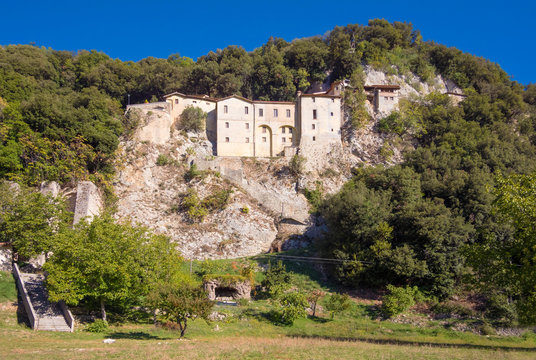
Have you ever heard the origins of the Nativity Scene? Have they been around for the entire 2,000 years of Christianity? Where exactly did it come from? The Nativity Scene as we know it today has actually been a custom since the thirteenth century. In fact, this year is the 800th anniversary of the very first one. It was St. Francis of Assisi who set up the first Creche in Greccio, Italy on Christmas Eve in 1223. He was passing through the area after going to Rome for the approval of his Third Rule. Christmas was only a couple of weeks away when he had the idea. He asked the pope’s blessing for his idea, and then sought the help of a nobleman to make a suitable space for the Creche. He then had a Baby Jesus made out of wax, and the nobleman’s ox and donkey were put into service, too.
The townsfolk were all excited about this and some volunteered for various roles. Everyone came out on the freezing cold Christmas Eve, with their torches making the area quite bright. They had Midnight Mass there, and St. Francis read the Gospel and preached a homily as he was a deacon. It is because of this event that we know for certain that he was a deacon. At the end of his homily, he went toward the Child Jesus in the manger to pick him up and kiss him. At that moment the Nobleman Giovanni Velita actually saw the Child Jesus wake up and look at St. Francis with a smile. Only the two of them saw Baby Jesus appear.
A further miracle from Greccio was that many people took straw from the manger home with them, and miracles occurred. There were both people and animals cured by the hay from that scene. In some places, people continue the tradition of taking a piece of straw home with them from a blessed manger scene. From the time of St. Francis’ first Nativity Scene, the custom has gone around the world to set up similar Nativity Scenes. Italy is especially known to be quite extravagant!
Now, some say Nativity Scenes were around several centuries before St. Francis, but a quick look at what they were talking about showed the scenes (as a mosaic in Santa Maria in Trastevere Rome) is really an Epiphany Scene. What’s the difference? For centuries, Epiphany was considered a higher feast than Christmas. The Epiphany Scene depicted Mary with the Child Jesus and the Wise Men with their gifts. The Wise Men represent all the other nations besides the people of the Promised Land.
Here at Casa Maria, our breezeway nativity scene is put up each year by December 8th. Somehow, it seems traditional that “Tree Day” is always a very cold day as we set up our little forest. In the cold, more critters keep making places for themselves in the hay! This year, you will see a special guest in our nativity scene, in memory of Greccio.
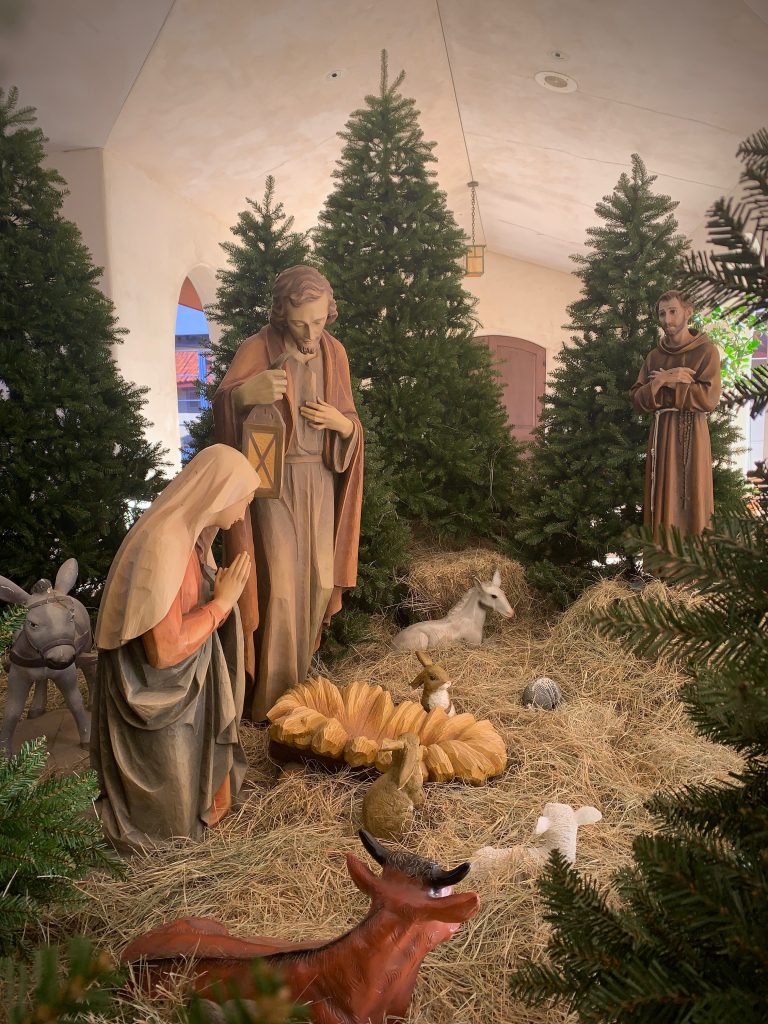
November 10, 2023
While researching for an assignment on Church History the other day, I came across a startling essay on Ancient Monasticism. Scanning through the text to see whether it would be a helpful resource, I wasn’t sure whether to laugh or cry. While professing to be Catholic, the author openly declared that what he learned of monasticism went completely against his personal beliefs. Where he places a high value on self-improvement, he concluded that Ancient Monasticism was entirely focused on the opposite, on self-denial. He concluded the essay with expressing an unsatisfied curiosity about Monastic life – hopefully his curiosity continues to lead him to more enlightening sources!
In reality there is no contradiction at all between self-improvement and self-denial, which is the trimming away of things that get in the way of our well-being. Taking health for an example, it is obvious that the denial of unhealthy inclinations is actually a source of self-improvement. True, the selfish part of ourselves does not like to be trimmed back. Establishing better habits does need to involve a certain death to self – meaning, the part of myself that desires what is not ultimately good for me. It is in fact, extricating of oneself from the center of one’s life to put God there instead. Such a death to self prepares the soul for a new and beautiful flourishing of life, in the slow growth of holiness.





Mother Mary Francis, PCC, has a lovely reflection on this continual dying and rising throughout life. She comments on nature’s example of dying gloriously, in joyful self-sacrifice for the sake of the new life to come.
Expertise is what we are after today. Nature has it in the sensitive area of death. She performs it like a Greek drama, with all the dignity of the inevitable freely chosen. Yet she dances it like an innocent child ballerina, spilling out the story with the effortless abandon of pure dedication. Again, she does it as purposefully as Francis of Assisi who sang because he had nothing left on earth and had found a Father in Heaven. She knows all about the return of spring and what makes that return possible.
And so … each nun and novice was asked last week to go outdoors and take a lesson in dying and resurrection from nature. It was suggested (by which we mean: Go ahead and do it!) that each one take spiritual notes on dying from what God has to say in nature. A few main points were anticipated, such as: dying ungrudgingly, gloriously, gorgeously, gaily. Because this is the way to live. …some of us seem to have forgotten how one arrives at resurrection. How Christ did. That it was and it is through suffering and death. Odd, how we can miss such an obvious fact as that we have to die before we can rise from the dead. (From the 1973 Preface to A Right to be Merry, originally published in 1956)
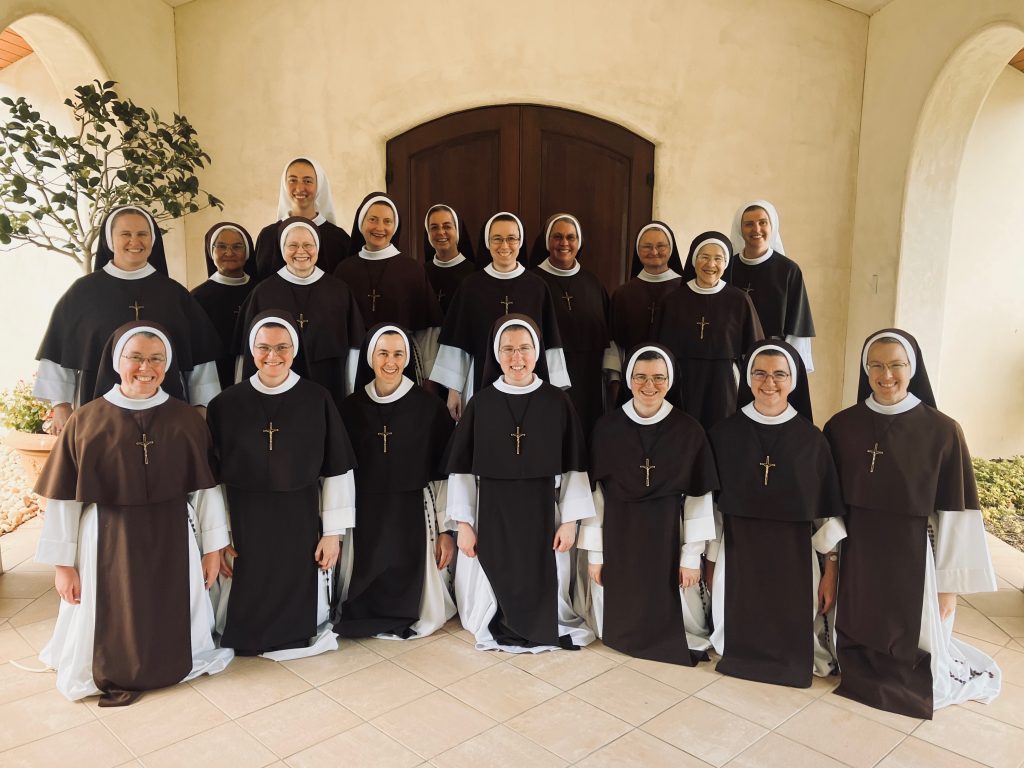
As a final point of reflection, allow me to call attention to the beautiful hymn O God Beyond All Praising. Its glorious tune and reflection upon God’s gifts to mankind leave a deep impression. But the often-omitted middle verse, interwoven with themes of praise and thanks, reflects that all things of this earth must die to allow for our passage to Heaven. But again, these ‘earthly splendors’ can refer to the selfishness, pride, and ego with which we do daily battle. They must give way to the Love of God and neighbor that will not end. This, so that as Christ died and ascended to Heaven, mankind can also rise through death, to ‘final victory.’
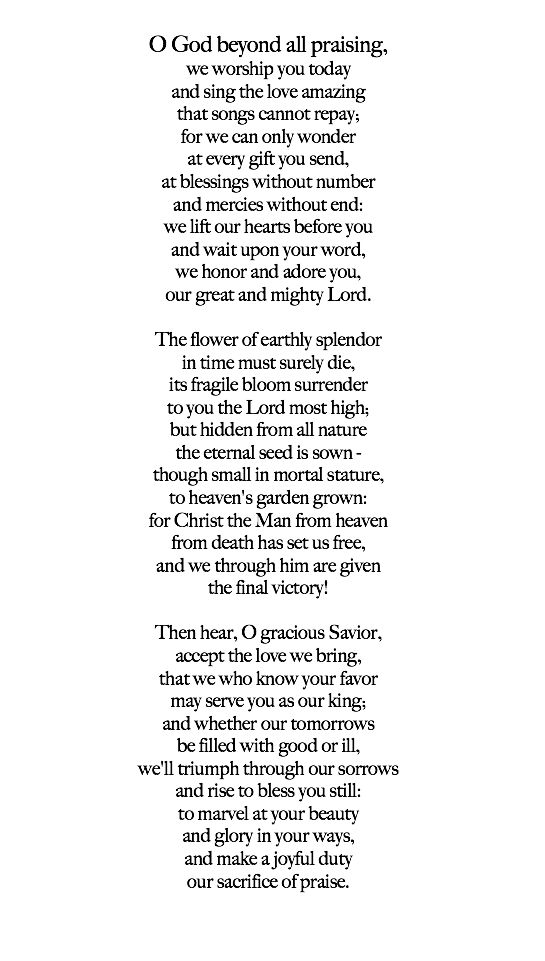
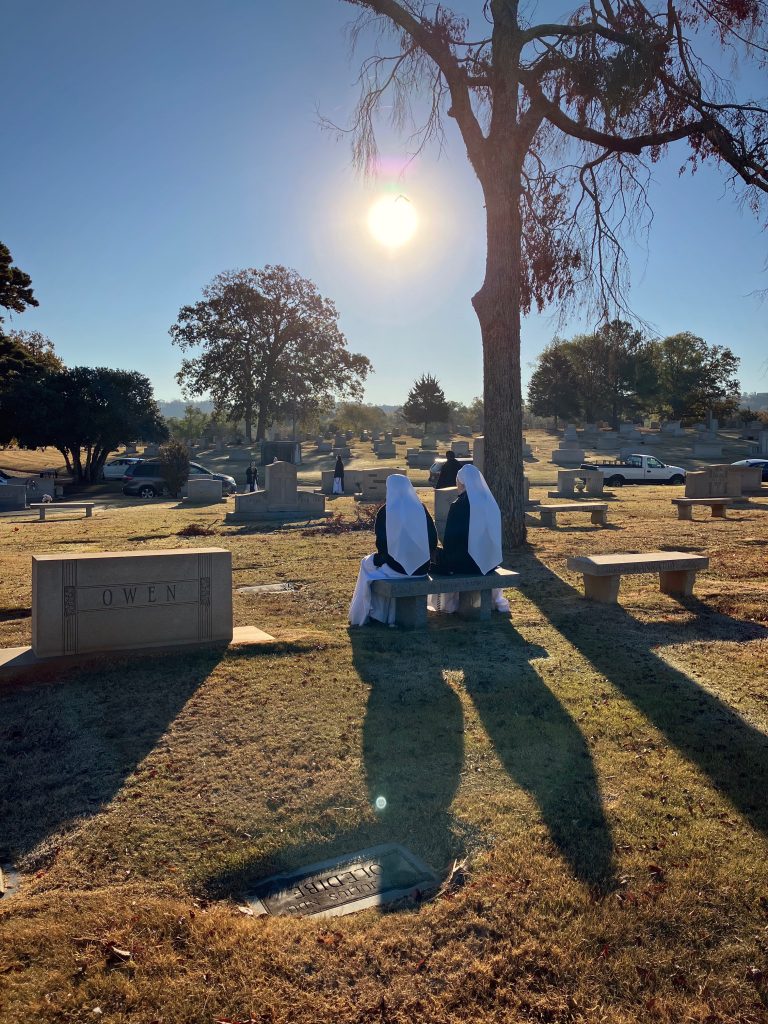
October 24, 2023
By Sister Marie Therese
At the end of September four other sisters and I headed to France for a pilgrimage. We spent six beautiful days in Lourdes which was followed by visits to Paris, Lisieux, Ars, and Nevers. The entire experience was amazing. In fact, when reflecting on the pilgrimage, it is hard to pin-point one instance or aspect that was the “best part.” A definite highlight, however, was our visit to Lisieux.
On the Feast of St. Thérèse, October 1st , we were able to attend Mass at the Basilica of St. Thérèse and visit the Carmel where she was a nun. I wish that I had the memory and the space to write about every aspect of our visit, but I must be content with a few glimpses. I hope these glimpses will convey something of how grace-filled the experience was.
The first impression of the Basilica was the size. It is definitely impressive and can accommodate 4,000 people. Another noticeable characteristic is a large mosaic depicting Jesus with Mary and St. Thérèse on either side. Mary and Thérèse are holding Jesus’ mantle open and ushering sheep under its folds. These two aspects, the size and the mosaic, speak volumes of St. Thérèse’s mission of “spending heaven doing good upon earth.’’ The size demonstrates that Thérèse’s mission is for the multitudes. Anyone who comes to her will find help. Also, as shown in the mosaic, she unites herself to the Blessed Mother so as to bring souls to Jesus. As souls grow in devotion to St. Thérèse, she, paradoxically, often slips more into the background. This is what is illustrated in the Basilica: she brings us under the mantle of Jesus where we don’t look at St. Thérèse, but we look at Jesus. She simply holds us there with her prayers and the miracles of grace for which she intercedes. Praying in front of her relics and being there with my dear friend (and yes, her presence was real and palpable) brought this realization to a deeper understanding. At the end of Mass, as another reminder of Thérèse’s mission and her promise of “showering down roses,” rose petals were scattered from the dome above us.
St. Thérèse is still fulfilling her mission and keeping her promises. Ultimately, this is simply a reminder that Our Lord’s mission is also being fulfilled in us and that He is faithful to His promises. He is the giver of all good gifts and I am so grateful for the abundance of graces He gave during the pilgrimage.
Below are some pictures from our time in Lourdes:
And a few from our travels to Ars (where John Vianney served as priest) and Nevers (where St. Bernadette lived as a Religious Sister)
September 15, 2023
At the end of August, we were invited for several days to the annual National Conference of Diocesan Vocation Directors in the diocese of Rockville Centre in Long Island. Diocesan vocation directors gathered at Immaculate Conception Retreat House for prayer, talks, and fellowship. This was an excellent opportunity for us to connect with priests from many dioceses, and the priests were happy to speak with religious Sisters supporting their work.
We were very edified as we visited with and prayed with and for our priests tasked with helping young men discern the call of priesthood and persevere through formation. The vocation directors are so full of zeal and a well-formed faith! Please pray for them as they strive to raise up worthy priests to serve the Church in our times!